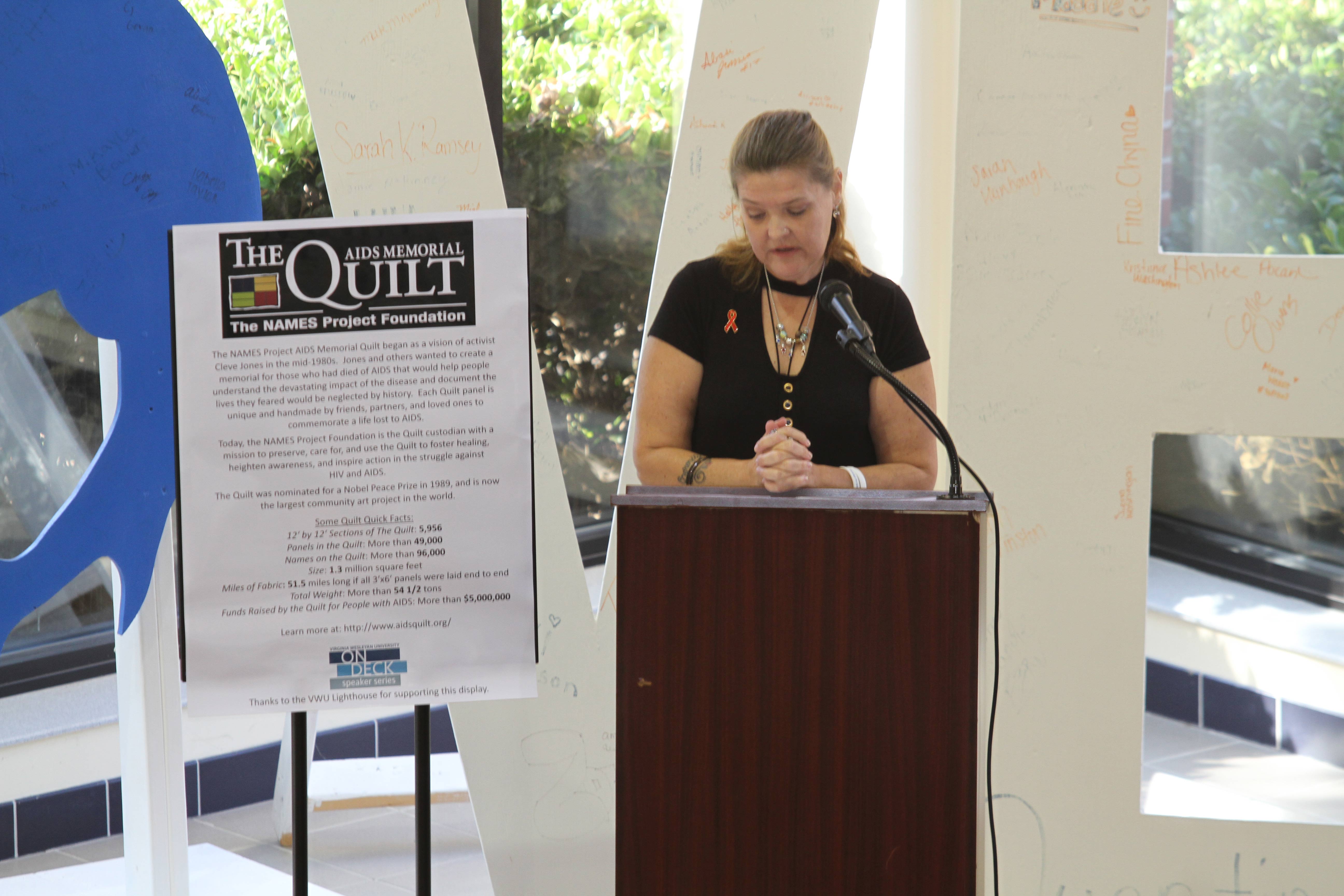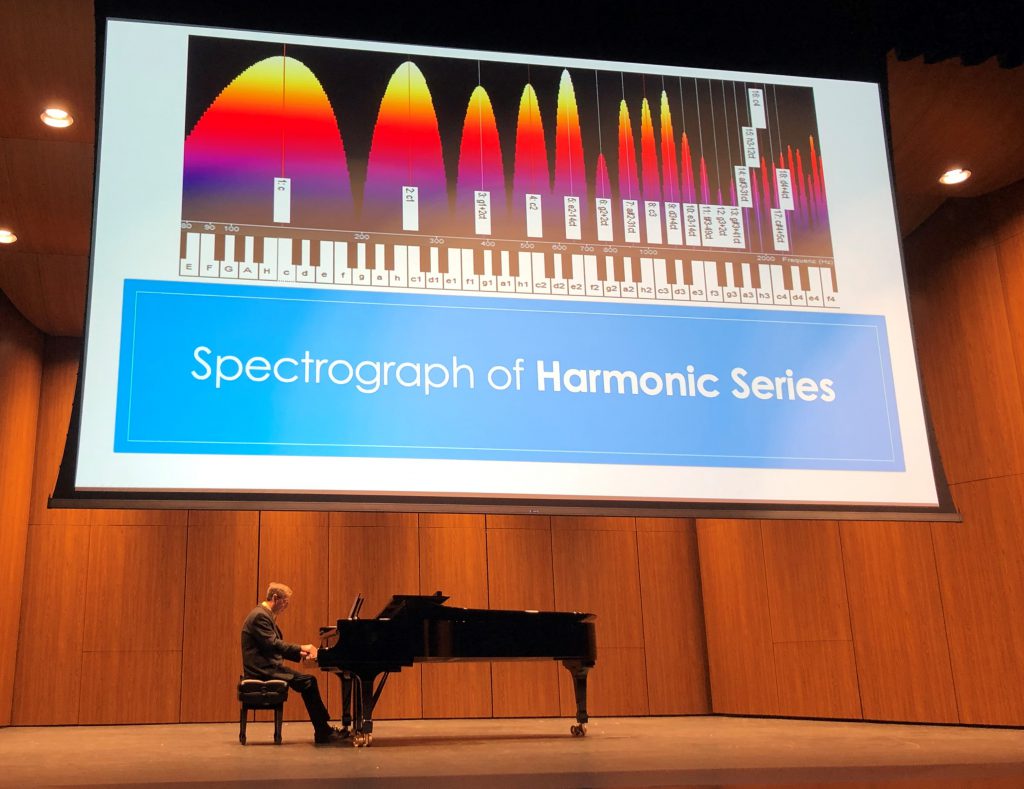This past week, Virginia Wesleyan joined together to recognize World AIDS Day. World AIDS Day started in 1988 and it is observed every Dec 1. Starting Nov. 29, the SOC 251: Epidemics and Society class and the Lighthouse On Deck Series put on various World AIDS Day events across campus. There were panels of the AIDS Memorial Quilt displayed in Batten as well as the opportunity to paint a block on the AIDS Memorial wall in Allen Village.
As part of Virginia Wesleyan’s events to commemorate World AIDS Day, Navy veteran and HIV/AIDS Activist Lorraine Reichert came to to speak to students and faculty about her experience as an AIDS survivor. Reichert talked about living with the disease and how she works to help the disease from spreading. Reichert first contracted the disease when she was pregnant with her second daughter. She now works as a senior community health navigator at the LGBT Life Center.
While sharing some of her life story and work as an activist, Reichert also shared information about the disease itself, including how it’s changed since it was first discovered. In her speech Reichert mentioned AIDS has changed since it was first discovered in the 1980s. “Since the 1980s ,scientists have created a therapy treatment to help treat AIDS and pharmaceutical companies have come up with a more sophisticated way to find potential exposure to HIV and find the infection much earlier,” Reichert said. Both are very beneficial, because now with early detection, people can get medicine to attack the virus before it attacks to that person’s cells.
Following her speech, Reichert answered questions from the audience, which varied from personal opinions on how the stigma of AIDS has changed over time to questions as how she started her journey as an activist. Reichert shared with the audience how she became HIV/AIDS activist. She first became an activist after she got out of the military in small clinics. After working in smaller clinics, she started working in jails, educating inmates about the disease.
Another thing that Reichert mentioned in her speech was the The NAMES Project/AIDS Memorial Quilt. As part of the World AIDS Day commencement on campus, panels of the quilt were put on display in the Batten Center. The AIDS Memorial Quilt was first created in 1985 by The NAMES Project founder Cleve Jones. Cleve Jones created the project to honor the memory of those who had died from the disease. At that time, AIDS was newly discovered and there was a lot of stigma around the disease and how it was contracted. When the panels were first created, they only contained the first name of the person who had died, but now more recently made panels contains the victims full name, something that Reichert believes that shows how far the understanding of the virus and the perspective of people living with the virus has changed.
The AIDS Memorial Quilt/NAMES Project is the world’s largest public art project and was nominated for a Nobel Peace Prize in 1989. Decades later the AIDS Memorial Quilt has more than 48,000 individual 3-by-6 foot memorial panels, weighs 54 tons and contains more than 96,000 names.
With all of the information and the stories that she shared, Reichert reaffirmed the message that she shared throughout her speech, “It is important to be educated and get tested, we’ve come a long way the fear and stigma is still there”
Cynthia Griffin
clgriffin@vwu.edu


